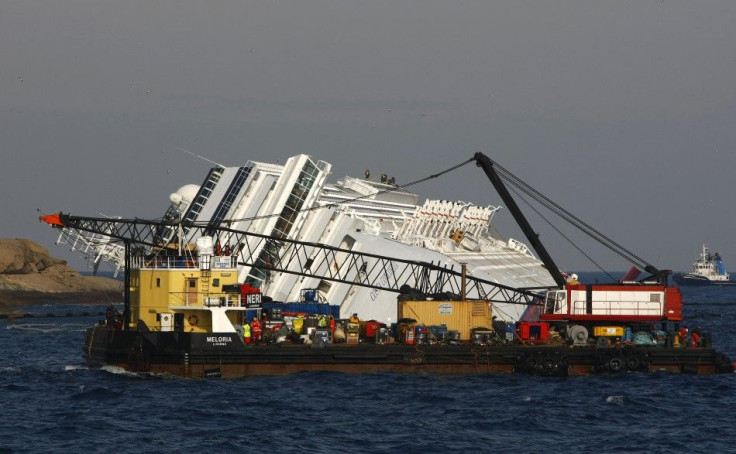Costa Concordia: Fuel Removal Under Way

Costa Concordia, the cruise ship that ran aground off Tuscany nearly a month ago, has begun to have its fuel removed. The cruise, which still remains capsized, reportedly held 500,000 gallons of fuel in 17 tanks.
The fuel extraction started Sunday afternoon said the civil protection department in Italy. The delay of the fuel extraction was caused by search and rescue operation, and then two weeks of bad weather.
Back in mid-January an unidentified liquid was found leaking from the Costa Concordia. Experts have feared a fuel leakage from the cruise. According to AP, the waters around Giglio are a protected maritime sanctuary. Dolphins, whales and porpoises inhabit the water.
While maritime expert and editor of HIS Fairplay Solutions, Malcolm Latarche, said that the fuel tanks are in protected locations, the position of the cruise ship may cause some small spillage.
The safe fuel removal of the Costa Concordia is said to take between two and four weeks. The cruise ships operator, Costa Crociere SpA, has hired Smit of Rotterdam to remove the 209m cruise liner from the water. According to Sky News, Smit of Rotterdam is one of the world's biggest salvagers.
According to AP, the fuel extraction process involves fixing valves on the underwater fuel tanks, one on top, one on bottom. The valves then have hoses attached to them which suck the fuel out of the top one, and pump sea water into the lower. The fuel however is currently gooey and has to be warmed.
© Copyright IBTimes 2025. All rights reserved.






















